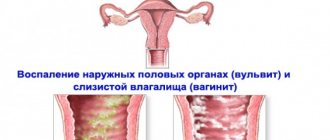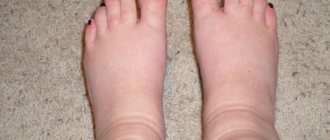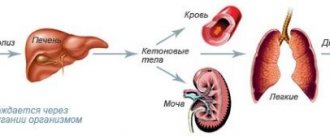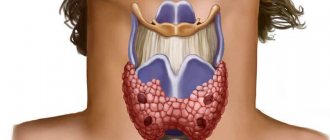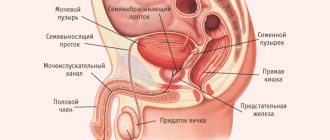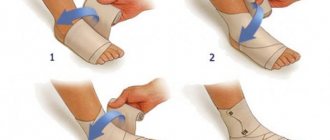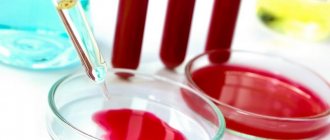Thrombophlebitis is a complex disease of the human venous system. It manifests itself in the form of inflammatory processes in blood vessels and arteries. Blood clots called thrombi appear in these veins. The danger of the disease is that it can cause various complications that lead to a complex condition and even death of the patient. Therefore, it is important for every person, especially those who are at risk, to know what prevention of thrombophlebitis is. In our article we will identify risk groups and determine prevention methods.
At-risk groups
Thrombophlebitis begins its development at the moment when the process of inflammation begins inside the walls of the venous vessels in the legs. This process is accompanied by the formation of blood clots. When a blood clot obstructs the blood flow, irreversible consequences begin that can be fatal.
Nodules appear under the skin, which are very painful. Swelling of the tissues is observed, they die. Many people get this disease as a complication of varicose veins. Therefore, the first category of people at risk are patients with varicose veins.
Every person on the planet over the age of forty suffers from thrombophlebitis. It is worth noting that residents of Europe are exposed to the disease more often than those living in Asia. There is an explanation for this. Many residents of eastern countries have the habit of sitting on the floor.
And in this position, blood circulates better through the limbs, unlike sitting on a comfortable sofa or chair. From this, two more risk groups can be distinguished: people leading a sedentary lifestyle and citizens over forty years of age.
Drivers and office workers suffer from the disease, because they spend most of their lives in a sitting position. People who work standing may also develop varicose veins. Very often, sales consultants and hairdressers complain of swelling in the legs.
The condition of the veins of the lower extremities is also affected by the patient’s body weight. Obese people are more likely to suffer from thrombophlebitis than others.
Women during pregnancy are at particular risk. Due to swelling and excess weight, processes can begin that lead to thrombophlebitis.
Well, it’s worth talking about age; the older the patient, the higher the likelihood of this disease occurring.
Diagnostics
To identify blood clots in the vessels of the lower extremities, you must visit your doctor. The doctor will conduct an external examination of the patient and prescribe the necessary examination.
You can diagnose the disease yourself by studying photos of deep vein thrombosis in the legs. The image shows swelling of the limb, accompanied by a change in skin color - if the upper sections are affected, it will be blue, the lower sections will become pale with a bluish tint.
Diagnosis of deep vein thrombosis in the legs
The following methods are used for diagnosis:
- Ultrasound duplex scanning;
- MRI with contrast;
- Radionuclide scanning.
These methods allow you to examine the vascular wall and draw conclusions about the presence of blood clots in the veins of the extremities. To assess the condition of the blood, special samples are taken and the concentration of enzymes and proteins is studied.
Prevention objectives
Preventive actions to prevent thrombophlebitis have one main and general goal - to reduce the likelihood of the occurrence and development of the disease and its complications.
Since the root cause of the disease in most cases is injury to the vessel, the main task is to focus on procedures to strengthen the vascular system, increasing their elasticity and tone.
In addition, the prevention of thrombophlebitis is focused on the general strengthening of the body’s protective functions so that infections do not have the opportunity to develop. Other risks also need to be eliminated. For example, it is worth reviewing your daily nutrition menu and making your lifestyle more active.
Increased activity
It is worth saying that an increase in human activity affects the condition of his blood vessels.
If you belong to the list of people who lead a sedentary and inactive lifestyle, then you are in one of the risk groups.
It is advisable to devote at least thirty minutes a day to simple physical activity, and you will already notice how your health will improve.
You can do gymnastics in the morning, you can attend a dance club or a fitness room. The choice is wide. If you do not have enough time, then we will tell you about simple exercises, the effectiveness of which is aimed at improving the tone of the veins:
- At the beginning of the exercise course, you should give your legs a rest. To do this, place your feet on a pillow and rest for a while. Stroke your legs, moving from your feet to your shins. This light type of massage has a good effect. It can be done both for pregnant women and immobile patients - all people for whom heavy loads are contraindicated.
- Then do the well-known exercise called “bicycle”. To do this, lie down on the floor, raise your legs up and begin to move as if you were riding a bicycle and pedaling. In the same pose, rotate your feet in a circle.
- In a lying position, perform an exercise called “scissors.” To do this, alternately cross your legs. This action can be done at work in a sitting position. Don't forget to move your fingers.
- Then get to your feet. Bring your legs together. Rise up on your toes and breathe deeply.
These exercises are very simple and do not require much time. If you do them twice a day, you can notice how your condition improves.
Symptoms
The main problem is that the diagnosis of thrombophlebitis of the lower extremities occurs when the disease is at a later stage. And the sooner treatment is started, the greater the chance of getting rid of the problem without consequences. Therefore, the first signs of pathology cannot be ignored:
- heaviness, burning, pain in the legs. More often localized in the calf muscles, they intensify after a day of work or physical activity;
- swelling;
- redness. Most often observed at the site of localization of a blood clot or inflammation of the vascular wall.
At a later stage, at the site of the lesion, blue or even blackening of the skin and thickening are noted. Sometimes peeling and itching of the skin may occur. Only a phlebologist can make an accurate diagnosis based on vascular ultrasound. This is necessary to determine the exact location of the blood clot (inflammation) and determine the extent of vascular damage.
The course of acute thrombophlebitis is accompanied by severe pain, which creates the effect of distension of the vessel from the inside. There may also be an increase in body temperature due to the inflammatory process.
Nutrition adjustments
When problems with veins occur, it is important to pay special attention to the patient’s nutrition. It is worth making your diet more correct, maintaining a balance of all useful elements. Food should cover all of your body's energy costs.
There are three principles that should be followed to improve your health and prevent vein diseases:
- Drinking regime. It is worth remembering that you need to drink at least two liters of plain, clean drinking water a day. Dehydration leads to blood clots.
- Healthy products. Nutrition must be correct. Enrich your diet with fruits, vegetables, fiber, lean fish and meat.
- Harmful products. Forget forever about spicy foods, fatty, salty, fried, floury and sweet. These foods make the blood very thick.
Watch your weight: Excess weight can be the root cause of weight problems. In order not to gain weight, you need to follow the principles of proper nutrition and exercise. Don't overeat.
Let's highlight a list of products that have a beneficial effect on the condition of the walls of venous vessels and reduce the coagulability of blood flow:
- fish;
- seafood;
- onion and garlic;
- dairy products;
- tomatoes;
- cranberry;
- cinnamon;
- grape;
- melons;
- sea kale.
Causes and risk factors
The cause of the pathology is considered to be a combination of negative factors. Thrombophlebitis of the saphenous veins develops under the simultaneous influence of the venous vessels:
- Infections. Pathogenic microorganisms penetrate the walls of blood vessels from existing foci of purulent inflammation (furuncle, sepsis).
- Damage to the vein wall. The cause of this condition can be trauma, mechanical compression, or therapy using intravenous medications.
- Congestion in the lower extremities.
- Varicose veins. The inability of blood vessels to ensure high-quality blood movement aggravates the condition caused by other factors.
In the presence of predisposing conditions, the development of the disease can be provoked by:
- Respiratory disease. Pathogenic microorganisms penetrate the vein walls with blood and attach to them if there are defects.
- Postoperative complication. Blood loss, bed rest and general weakness of the body contribute to blood stagnation.
- Formation of a neoplasm. The tumor worsens the composition of the blood, compresses the blood vessels, disrupting natural blood circulation.
- Hormonal imbalance. Changes in blood composition due to natural causes or the use of certain medications contribute to disruption of the entire vascular system.
- Dehydration. Lack of fluid in the body increases blood viscosity, which increases the load on blood vessels.
- A blood disorder such as thrombophilia. An excess of blood cells can cause the formation of blood clots, which provoke inflammation of the venous wall at the site of attachment to it.
- Obesity. Excess weight causes gradual compression of blood vessels.
- Disruption of blood flow.
Treatment of warning signs of illness
There are a number of diseases, a complication of which is thrombophlebitis. For example, varicose veins lead to problems with the proper flow of blood throughout the human body. A good environment appears for blood clots to form.
Ulcers of the trophic type, which appear as a complication of venous diseases, can also be an additional factor for the occurrence of infection and the development of the disease.
It is worth remembering that if there is a certain infection in the body, it can lead to thrombophlebitis.
Therefore, you should not neglect even the treatment of a simple cold. At the first signs of ARVI and influenza, timely treatment must be started. This also applies to other infections and even caries.
And if you have already suffered from an infectious disease, then check the condition of your venous vessels, especially in the legs, they are at particular risk.
Be careful if you become dehydrated, for example after poisoning. And you should also be wary of problems with blood clotting.
Diagnosis of thrombophlebitis of the superficial veins of the lower extremities
Despite the fact that the disease is characterized by special external signs that distinguish it from other vascular pathologies, an accurate diagnosis is necessary to prescribe adequate therapy. To do this, the following diagnostic procedures are performed:
- Ultrasound. Usually, if superficial thrombophlebitis is suspected, Doppler ultrasound or duplex/triplex scanning is indicated. An ultrasound examination allows you to assess the speed and strength of blood flow, determine the depth and intensity of inflammation of the vein wall, and identify areas of vasoconstriction.
- CT or MRI with angiography. Typically, this research method is indicated if the patient is suspected of having not only a superficial, but also a deep localization of the inflammatory process. In this case, it is recommended to inject a special contrast agent into the vessel under local anesthesia, followed by computed tomography or magnetic resonance imaging. Angiography allows the doctor to assess the general condition of the patient’s blood vessels, observe the nature of blood flow, identify places where blood clots form and determine the size of blood clots.
- Laboratory tests of blood composition. A blood test is performed for hemoglobin, platelets, C-reactive protein, fibrinogen, leukocytes, and ESR.
Expert opinion
If you have been diagnosed based on the external manifestations of the disease alone, insist on additional diagnostic measures. This is very important, since the treatment strategy will depend on the size of the blood clot and the assessment of the inflammatory process, and they can only be analyzed using ultrasound, CT or MRI and a blood test.
Vascular surgeon, phlebologist
Osipova Ekaterina Yakovlevna
Treatment methods for superficial thrombophlebitis
Other preventive techniques
Here are a number of general recommendations that will make it possible to reduce the likelihood of the occurrence of such a disease as thrombophlebitis:
- It is worth leading a healthy lifestyle, forgetting about alcoholic beverages and smoking.
- Try to start hardening yourself. Don't start by diving into icy water. Start with a regular contrast shower at home. You can start only with the lower extremities.
- Do not overcool: when the body is too cold, its protective properties are reduced.
- If you experience pain and heaviness in your legs, you can use elastic underwear and compression stockings.
- A preventative massage helps a lot; it should only be done by a qualified specialist.
- Don't forget to visit your doctor regularly.
Consequences and prognosis
The pathology is curable with timely diagnosis and quality therapy. The development of complications and surgical intervention can cause a decrease in the speed of blood flow, which is a prerequisite for relapse of the disease.
With an advanced form of purulent thrombophlebitis, there is a risk of developing bleeding mixed with pus, which threatens sepsis, which even amputation of a limb does not always help to cope with. If you seek medical help when the first signs of illness appear, such a scenario can be avoided.
Traditional methods
Traditional medicine has proven itself in all aspects. At home, such prevention recipes can have a good effect. Here are some examples of such folk therapy:
- Soda compresses. Place some baking soda on the cheesecloth and lightly moisten it with water. Apply to the problem area.
- A cabbage leaf is rolled in egg yolk and used as a compress.
- Collections of various medicinal herbs can be drunk in order to strengthen the body from the inside.
Prevention in the postoperative period
Prevention of the disease after surgery is due to the fact that the patient is in bed for a sufficient amount of time. In addition, blood clotting increases. In order to avoid blood stagnation after surgery, it is worth taking preventive measures such as:
- take anticoagulant medications prescribed by your doctor;
- use elastic knitwear or compression bandages;
- hydration of the human body must be at a high level;
- It is worth using gentle surgical techniques;
- If possible, reduce the amount of time you spend in bed to a minimum.
The level of effectiveness of such measures will vary for each patient.
Stages of thrombophlebitis
Three stages of development of thrombophlebitis are considered. Treatment depends on the stage of the disease:
- The thrombus is located in the lumen of the vessel, blocks the path to blood flow, the vein gradually expands, delivering a lot of unpleasant sensations to the patient.
- The thrombus has separated from the wall of the vessel and can travel with the blood to any organ.
- The easiest stage. Creation of a blood clot that can dissolve.
Treatment of thrombophlebitis of the superficial veins is carried out under the supervision of a doctor.
Prevention of exacerbation of the disease
If you have been diagnosed with this unpleasant disease, you should protect yourself from its exacerbations. To do this you should:
- Use compression garments. You can bandage your legs with an elastic bandage.
- Use drugs from the group of anticoagulants. Take vitamins. All these medications must be prescribed by a doctor.
- Drink the right amount of water per day to stay hydrated.
- Do not expose yourself to strong physical stress, do not stand on your feet for a long time.
- Do not get carried away with visiting baths and saunas. Hot baths should also be avoided.
Now you know what preventive measures must be taken to avoid the occurrence of thrombophlebitis. As in many other cases, you should start with correcting your diet and exercising.
Monitor the water balance in the body; lack of the required fluid level leads to blood thickening and the formation of blood clots. These are the basic rules for preventing any diseases associated with the appearance of blood clots. We wish you good health.
Thrombophlebitis is a disease that can threaten the patient’s life and therefore requires immediate treatment.
Therapeutic and preventive measures for thrombophlebitis are complex and can be conservative and surgical. The main objectives are to maximize the elimination of risk factors, reduce and alleviate local symptoms, prevent the spread of thrombophlebitis to the deep vein network and prevent venous thromboembolic complications.
Surgical treatment
Not long ago, the gold standard for the treatment of ascending thrombophlebitis was crossectomy (Troyanov-Trendelenburg operation), but practice results have shown that this method of surgical intervention is the most traumatic and life-threatening for patients.
According to the latest revised clinical guidelines, endovenous laser coagulation (EVLC) is a low-traumatic and safe technique for ascending thrombophlebitis. This method can be used to operate on any category of patients. As a rule, surgery is performed under local tumescent anesthesia. When the process goes beyond the sapheno-femoral or sapheno-popliteal anastomosis, thrombectomy is performed from the main veins. Surgery can be performed using regional anesthesia or intubation endotracheal anesthesia. The preference for thrombectomy method depends on the level of location of the proximal part of the thrombus.
In case of perforator thrombosis, thrombectomy from the perforator vein is performed. In case of embolic thrombosis of the femoropopliteal segment, ligation of the superficial femoral vein (SFE) is indicated.
In case of embolic-dangerous iliocaval thrombosis, plication of the inferior vena cava is performed.
The figure shows the implantation of a vena cava filter into the inferior vena cava, the indication for which is embolic iliocaval thrombosis.
Conservative treatment
Today, for existing indications, the most effective method will be anticoagulant therapy. In medical practice, it is customary to distinguish between direct-acting anticoagulants, which help reduce thrombin activity in the blood, and indirect-acting anticoagulants, which prevent the formation of prothrombin in the liver. Low molecular weight heparins belong to the group of direct-acting anticoagulants. These include medications such as Enoxaparin sodium (Anfibra, Clexane, Hemapaxan, Lovenox), Dalteparin (Fragmina) or Tinzaparin, which must be administered subcutaneously 1-2 times during the day. The use of low molecular weight heparins results in maximum effectiveness and minimal side effects. Indirect anticoagulants are Warfarin derivatives, which require special caution and a high degree of laboratory control (INR). Currently, the greatest interest is in drugs that do not require laboratory monitoring of INR and with lower risks of complications, for example, such as Xarelto (Rivaroxaban) or Pradaxa.
In addition, the patient is prescribed long-term wearing of compression hosiery and auxiliary pharmacotherapy, phlebotonic drugs (Detralex; Venarus; Phlebodia 600), etc. It is also advisable to prescribe non-steroidal anti-inflammatory drugs and local treatment.
